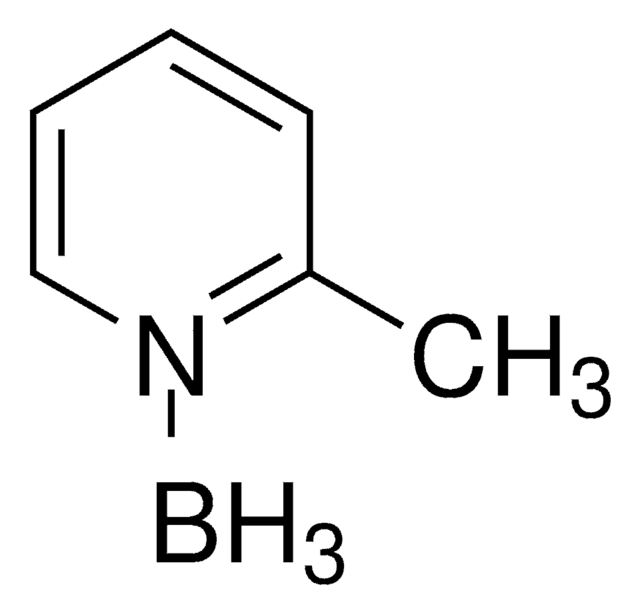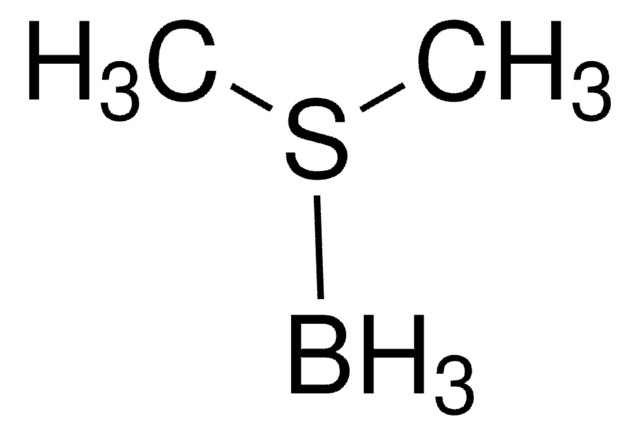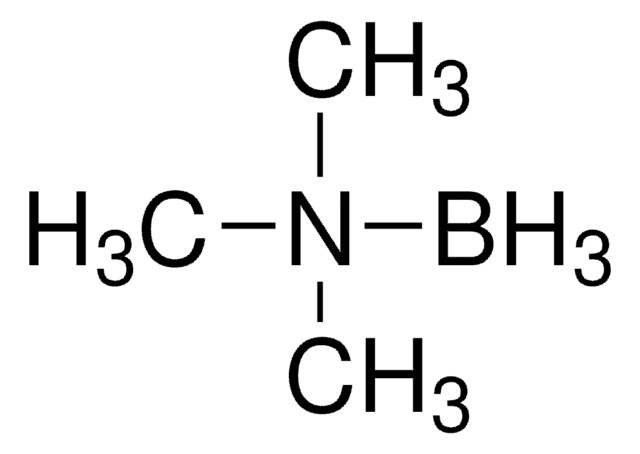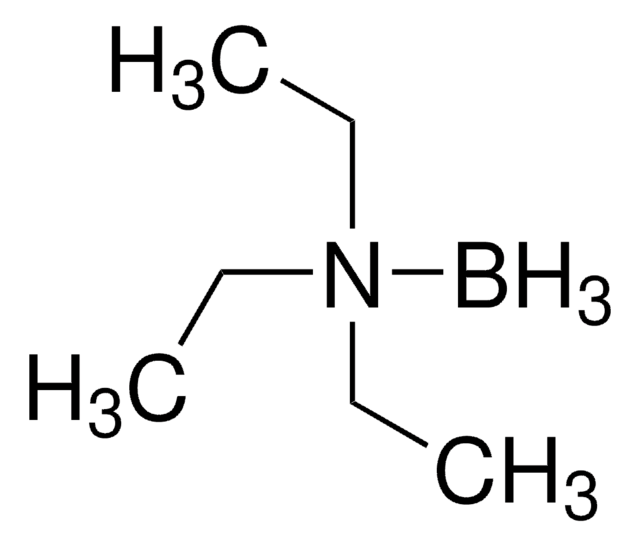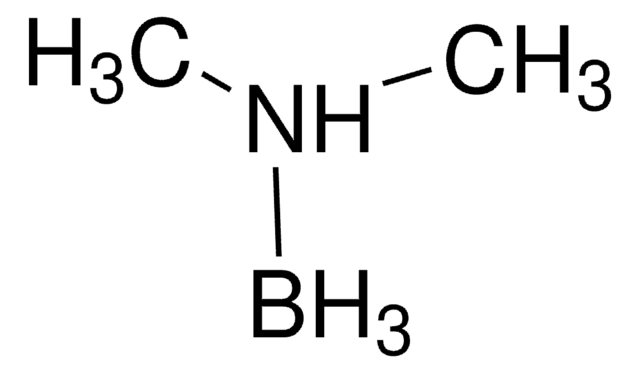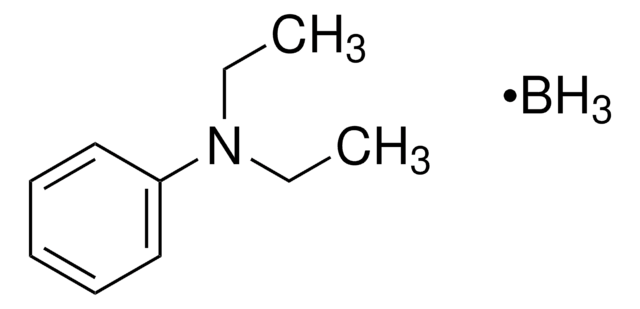179752
Borane pyridine complex
~8 M BH3
Synonym(s):
NSC 10219, NSC 53324, Pyridine borane, Trihydro(pyridine)boron
Sign Into View Organizational & Contract Pricing
All Photos(1)
About This Item
Empirical Formula (Hill Notation):
C5H8BN
CAS Number:
Molecular Weight:
92.93
MDL number:
UNSPSC Code:
12352005
eCl@ss:
39151701
PubChem Substance ID:
NACRES:
NA.22
Recommended Products
form
liquid
Quality Level
reaction suitability
reagent type: reductant
concentration
~8 M BH3
refractive index
n20/D 1.532 (lit.)
mp
10-11 °C (lit.)
density
0.92 g/mL at 25 °C (lit.)
storage temp.
2-8°C
SMILES string
[BH3-][n+]1ccccc1
InChI
1S/C5H8BN/c6-7-4-2-1-3-5-7/h1-5H,6H3
InChI key
LPGWNCNRGQANGC-UHFFFAOYSA-N
Application
Borane pyridine complex is commonly used as a reducing reagent for the reductive amination of aldehydes and ketones. It is the precursor to synthesize carbon-based material, BC4N. Along with iodine, it can be used as a reagent for hydroboration of alkenes and alkynes.
Used for:
Reducing agent for high performance liquid chromatography analysis of oligosaccharides
Modifier in decant oil affecting its carbonization to mesophase pitch
- Investigations of site energy distribution functions from Toth isotherm for adsorption of gases on heterogeneous surfaces
- Preparation of α−alkyl-β-hydroxy esters
- Regioselective immobilization of short oligonucleotides to acrylic copolymer gels
- Preparation of Igs conjugated with viral peptide epitopes
- Sintering of silicon carbide
Reducing agent for high performance liquid chromatography analysis of oligosaccharides
Modifier in decant oil affecting its carbonization to mesophase pitch
Caution
May darken in storage.
Other Notes
may contain excess pyridine
Signal Word
Danger
Hazard Statements
Precautionary Statements
Hazard Classifications
Acute Tox. 1 Inhalation - Acute Tox. 3 Dermal - Acute Tox. 3 Oral - Eye Irrit. 2 - Flam. Liq. 2 - Skin Irrit. 2
Storage Class Code
3 - Flammable liquids
WGK
WGK 3
Flash Point(F)
69.8 °F
Flash Point(C)
21 °C
Choose from one of the most recent versions:
Already Own This Product?
Find documentation for the products that you have recently purchased in the Document Library.
Customers Also Viewed
A novel carbon material derived from pyridine-borane.
Riedel, Ralf et al.
Advanced Materials, 3(11), 551-552 (1991)
T Miron et al.
Analytical biochemistry, 440(1), 12-14 (2013-05-28)
In this note, we describe a method devised to detect, by means of mass spectrometry (MS), tryptophan-containing peptides and proteins using pyridine-borane. This reagent selectively reduces tryptophan residues, converting them to 2,3-dihydro-tryptophan, thereby enabling quantitation of tryptophans.
Journal of the Chemical Society. Perkin Transactions 1, 717-717 (1984)
Jethro L Hemmann et al.
Proceedings of the National Academy of Sciences of the United States of America, 116(51), 25583-25590 (2019-11-30)
Methylotrophy, the ability of microorganisms to grow on reduced one-carbon substrates such as methane or methanol, is a feature of various bacterial species. The prevailing oxidation pathway depends on tetrahydromethanopterin (H4MPT) and methylofuran (MYFR), an analog of methanofuran from methanogenic
Hydroboration with pyridine borane at room temperature.
Clay, Julia M and Vedejs, Edwin
Journal of the American Chemical Society, 127(16), 5766-5767 (2005)
Our team of scientists has experience in all areas of research including Life Science, Material Science, Chemical Synthesis, Chromatography, Analytical and many others.
Contact Technical Service